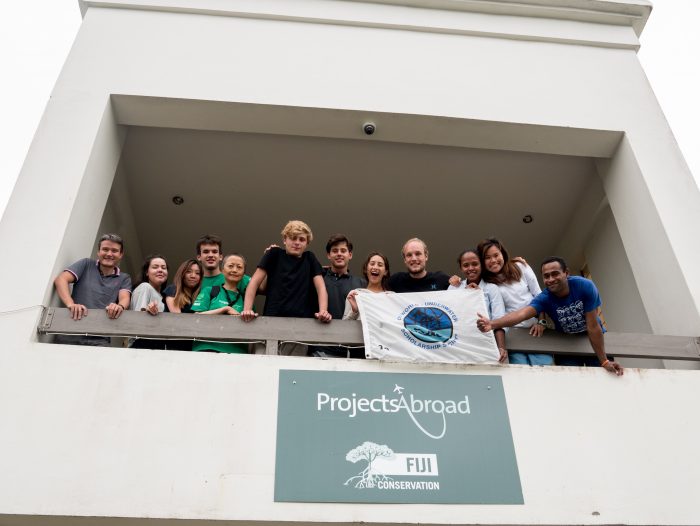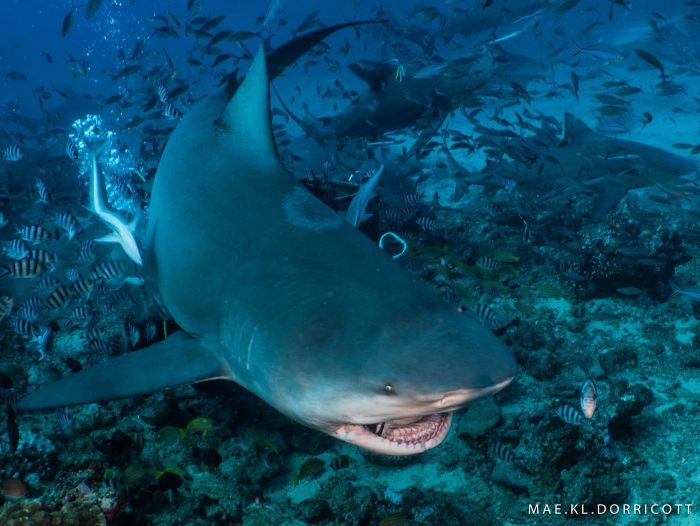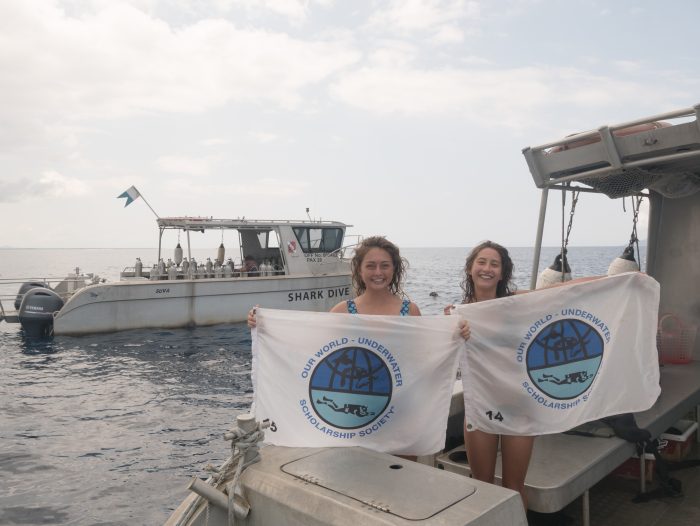There we were, sitting on a small fiber glass fishing boat, sheltering under our waterproofs from the cold spray of the swell, watching Sebastian, Ben and Gauthier haul in the shark net for the second time… Come on, we thought, there’s got to be a shark this time! But alas, again there was no catch.
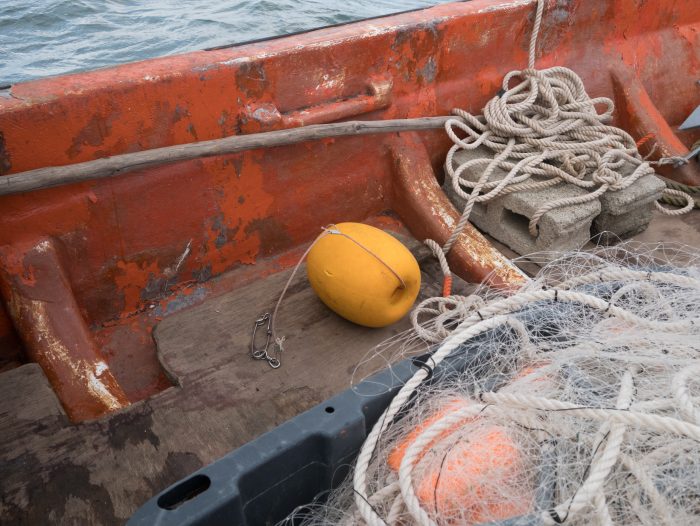
So, we lay out the line again and wait for another hour. Gauthier Mescam, the lead scientist at Projects Abroad, takes out volunteers to tag sharks in the Pacific harbour coastline of Fiji to better understand where the shark nurseries are. This is just one of the activities the project conducts to help aid the conservation of sharks in the area. Almost 70 % of the 75 recorded elasmobranch species (sharks and rays) inhabiting Fijian waters are considered to be globally threatened with extinction. With such a harsh fact to face, there’s no questioning why we were sitting in our little fishing boats waiting to catch sharks. However, after sitting for 3 hours, slowly getting cold and stiff with no signs of sharks, a phone call was very well received. Our boat captain, turns to Gauthier after putting down the phone and says “They’ve got one… in the village.” We all look at each other. “Well… LETS GO!”
Suddenly we zoom off. The boat catching some serious air as we power through the choppy waves to find us a shark! We pull up to the outskirts of the village where the locals perch on the boulders in the shallows. They point and usher us to a sandy patch just a few meters deep. And there she is, a small white tip shark, her tail tied to a rock with enough line so she can swim, but not get away. The villagers caught the shark by accident in their nets, but kept her for Projects Abroad to tag and release as they knew of their work. Gauthier hooks the shark with the oar and lifts it up…. “Move, I’m bringing her into the boat” *– read it in a French accent*. We look around the boat… “in here?” the elegant white tip is lifted into our tiny vessel and the science is swiftly undertaken. Tissue samples, measurements and tags are completed within less than 3 minutes. And then she’s released back into the sea. High fives all round and we leave the village in great spirits. It’s not everyday you get to catch a shark!
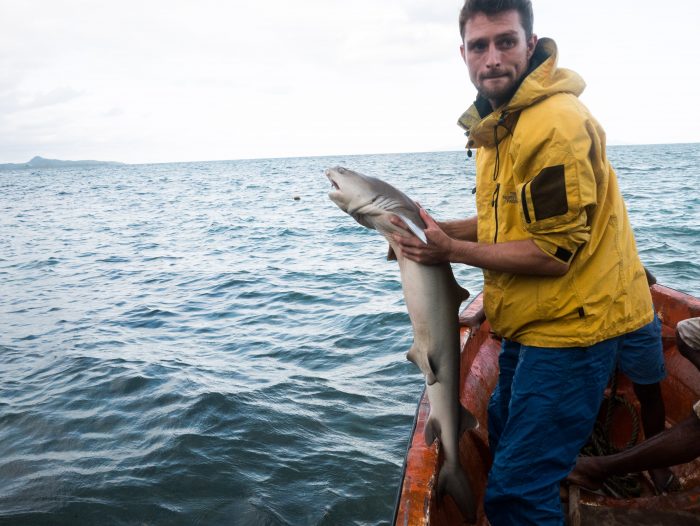
It was a special experience tagging the white tip with the locals help. However, the main draw for me to Fiji was the famous Beqa Adventure Divers Shark Dive. The dive where you come face to face with Bull sharks. I was able to enjoy this world class experience with my scholar sister Melinda Brown (2017 Australasia), her fantastic coordinator Jayne Jenkins, Madeleine McGrath and Sophie Kesteven.
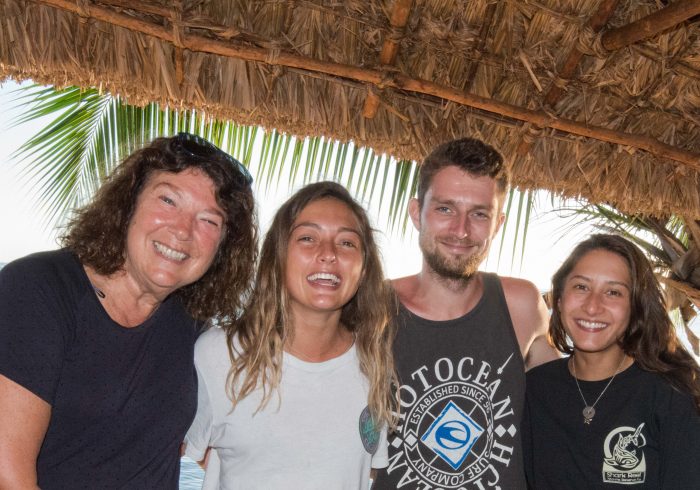
The dive is takes place at Shark Reef Marine Reserve (SRMR) located in the Beqa channel – Fiji’s first NMP (National Marine Park). The BAD team along with other dedicated local people campaigned for eleven years to make it happen. None of this would have been possible without the involvement of the Fiji Department of Fisheries and the traditional owners of the reef, the local villages and in particular Galoa. Every diver who participates on The Shark Dive pays a ‘Shark Reef Marine Reserve Levy’ of FJD $25 which goes towards the communities who have relinquished fishing rights within the reserve for local projects.
During the briefing we’re told that we’ll kneel on the bottom and bulls will then come in. But on the descent we could already see them circling below. A dozen, huge and hefty, their girth 3 times the size of me. Some even larger as they were ready to give birth. And you know what… there wasn’t an inch of fear. It could have just been the adrenaline… But even after asking others, the feeling we all agreed on when we saw the sharks, was pure amazement.
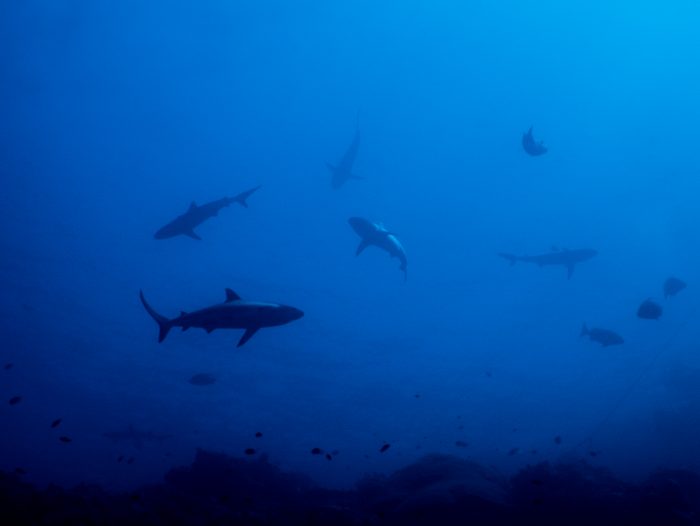
The BAD (Beqa Adventure Divers) boys head on in and attract the bulls closer with bait. Some of the bulls would come in low and take bait from the feeders hands. Others would wait for bait to be dropped down from another feeder swimming higher with the bin, and swoop in to take their prize. It was unbelievable how close we were getting to these wild beauties. I struggled sometimes to keep my head still as I never knew which way to look as there were so many. (To think if I came earlier in the season, there would have been even more – up to 80!)
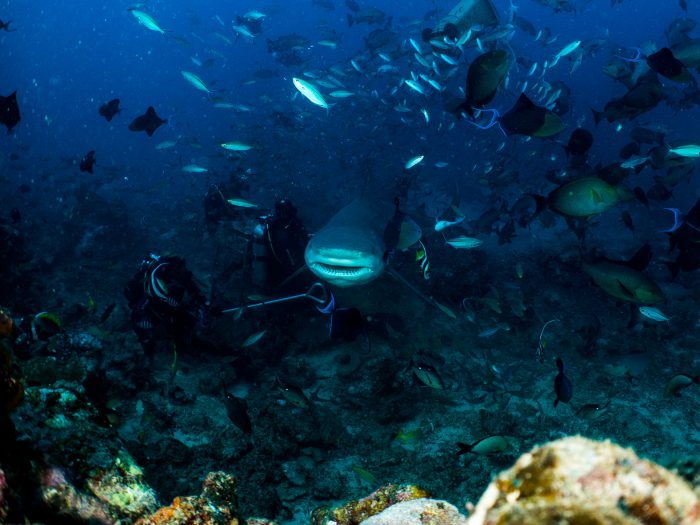
On one dive, I was so distracted by some sharks in front of me I didn’t notice a large female shark who swam right over my shoulder.
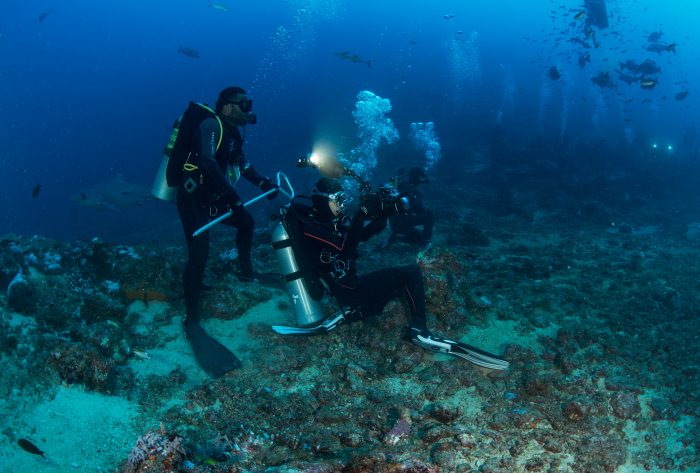
BAD use time with the sharks as an opportunity to learn more about them. Every dive, data are collected and compiled into a very comprehensive and thorough database. With the help of external scientists from various institutions, a picture is being generated that goes against the nay-sayers of such an operation.
Mike Neumann, founder of BAD suggested the analogy of a popular restaurant to explain the patterns. The restaurant will always have consumers; some are regulars and some you see rarely. But like a restaurant, the sharks don’t rely on the BAD feed as a primary food source. Instead, tagging data shows that the sharks still travel far and wide to hunt throughout the waters of Fiji. So, the BAD way of conducting their feeds is showing no long term effect on the population of Bull Sharks in Fiji.

It’s also important to note that without the bait, there is no way that we’d be able to see so many bull sharks aggregate or get so close to them. The benefits of such a tourist attraction is having positive knock on effects, especially as the reserve is maintained by the fees paid by the divers. Fishing yields have increased substantially around the neighbouring areas because of the spill over of the fish population booming from the lack of fishing in the protected zone.
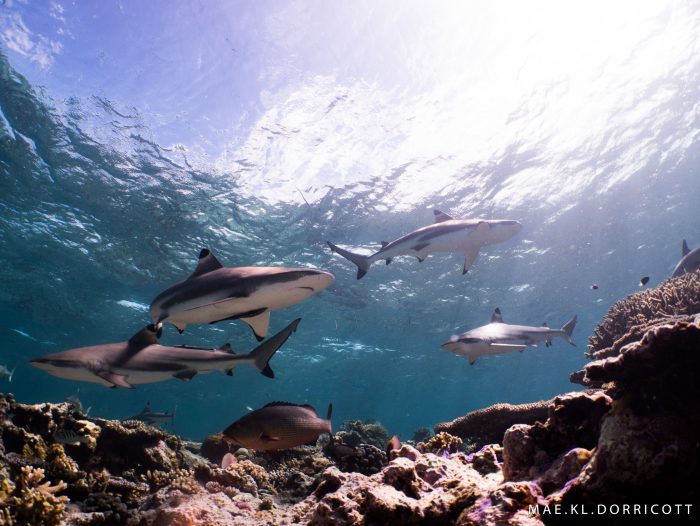
The aggregation of sharks during the morning feeds is an opportunity for researchers to further understand it’s impacts on the sharks. It’s not only the Bull sharks who are enticed in by the bait, but also Grey reefs, Black tips and White tip sharks too. The latter actually being a nocturnal hunter, which has raised eyebrows again to what impact the feed is having on these species.
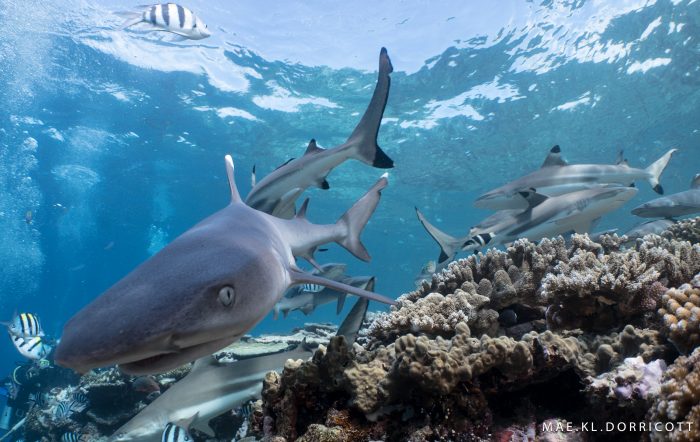
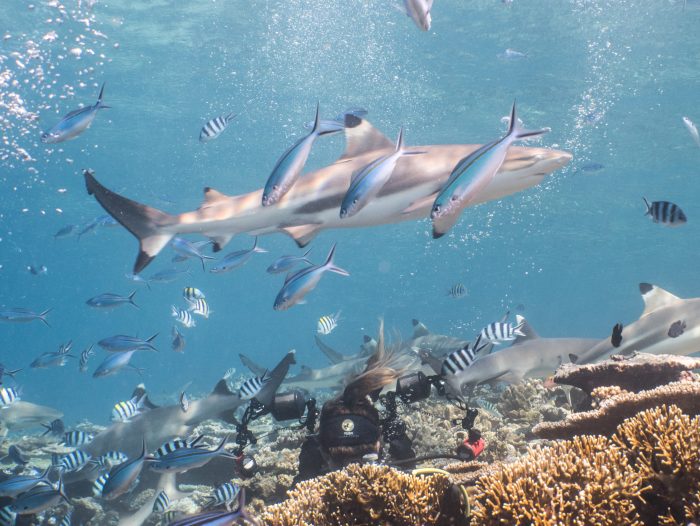
Mel and myself were able to watch Adam Barnett from James Cook University, Gauthier and the BAD boys try to tag white tips (in the water this time) with accelerometers. This was to assess the long term effects of their metabolism from the change in behaviour caused by the feed. Some shark operations don’t feed the smaller sharks, pushing them away to just focus on feeding the bigger species. However, at BAD they spilt the dive up between depths and species, allowing time to feed the smaller sharks. And due to this, they predict that they offset the energy expenditure the nocturnal species use, by waking up and seeking out the attractive food source, compared to places where they do not feed them. Could this hinder their health?… More research needed… that’s what we got to see in action. But it’s not easy to catch a shark by hand when it’s trying to get its jaws around some tasty bait.
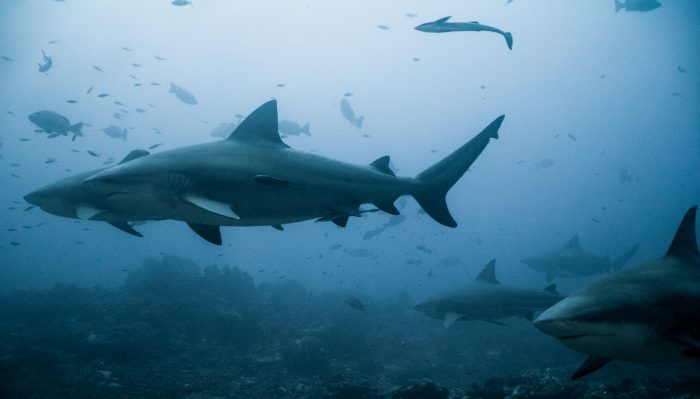
You can’t travel all the way to the Pacific to dive with sharks and not have a sense of guilt for the disgusting carbon footprint you’re leaving behind. The one and only Jayne Jenkins suggested that Mel and I went planting some mangrove propagules – provided by Projects Abroad – They have the largest mangrove nursery in the southern hemisphere – to quote Tim! Mangroves are a huge carbon sequester, which basically means they’re one of the best organisms on the planet to remove carbon dioxide from the atmosphere and store it in their tissues. So, taking a few bunches of mangrove babies from the nursery, with help from Gauthier and photographer Christian Miller, we set out to find a bare patch of mud flat to plant our compensation to the environment. And after planting 40 propagules and getting pretty muddy, I can proudly say that we both off-setted our carbon footprint to get us to Fiji. I just wish I had a constant supply of mangrove seedlings to take with me around the world!
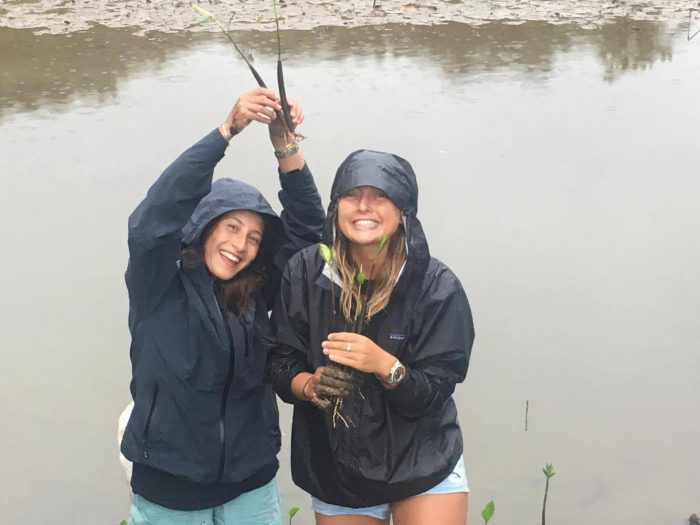
One week in Fiji saturated with sharkiness, with again many a gratitude to make…
Thank you to Project Abroad- Fiji for letting me stay with you. The staff and volunteers, especially my lovely flat mates gave me lots of laughs and giggles and I’ll miss eating ice lollies with you all. Mike Neuman and Andrew Cumming, thanks a bunch for arranging my time out in Fiji. I can see where your reputation as the best shark operation comes from, and I’ll always be thankful to the BAD boys for having my back when the sharks were coming!
